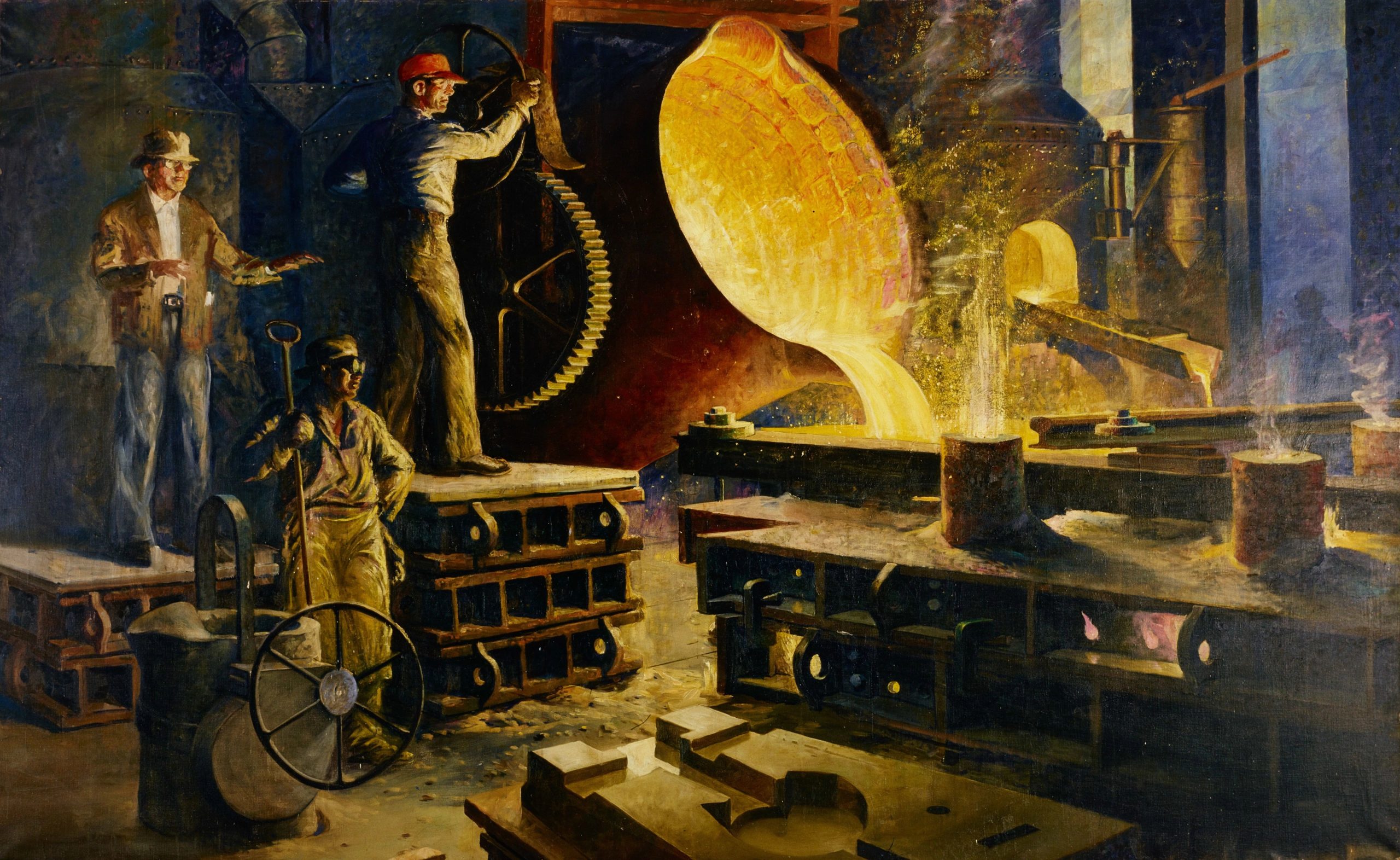
Intense heat radiates from the giant ladle of molten steel in the center of the work. It illuminates the scene, a light source of its own. That heat is palpable as you approach the piece yet the workers on the left seem all too calm and cool. They stand mere feet from the mold in the foreground that’s surrounded by a cloud of steam and flashes of burning metal that float, glistening in the air. This scene feels surreal, almost fantastical – not one you’d expect to find just down the road.
Making a Big Impression
One of the things I love most about studying art is seeing works in person after I’ve had the opportunity to get to know them online or in a textbook. One of the many reasons for that is scale. I like to see if the expectation I had in my head matches the real piece. So after coming to The Mariners’ and getting to learn about some of our Thomas Skinner paintings through our online catalog, I knew I had to see them in person. They were bold, bright, colorful, and dynamic – but what I didn’t realize… is how big they were.
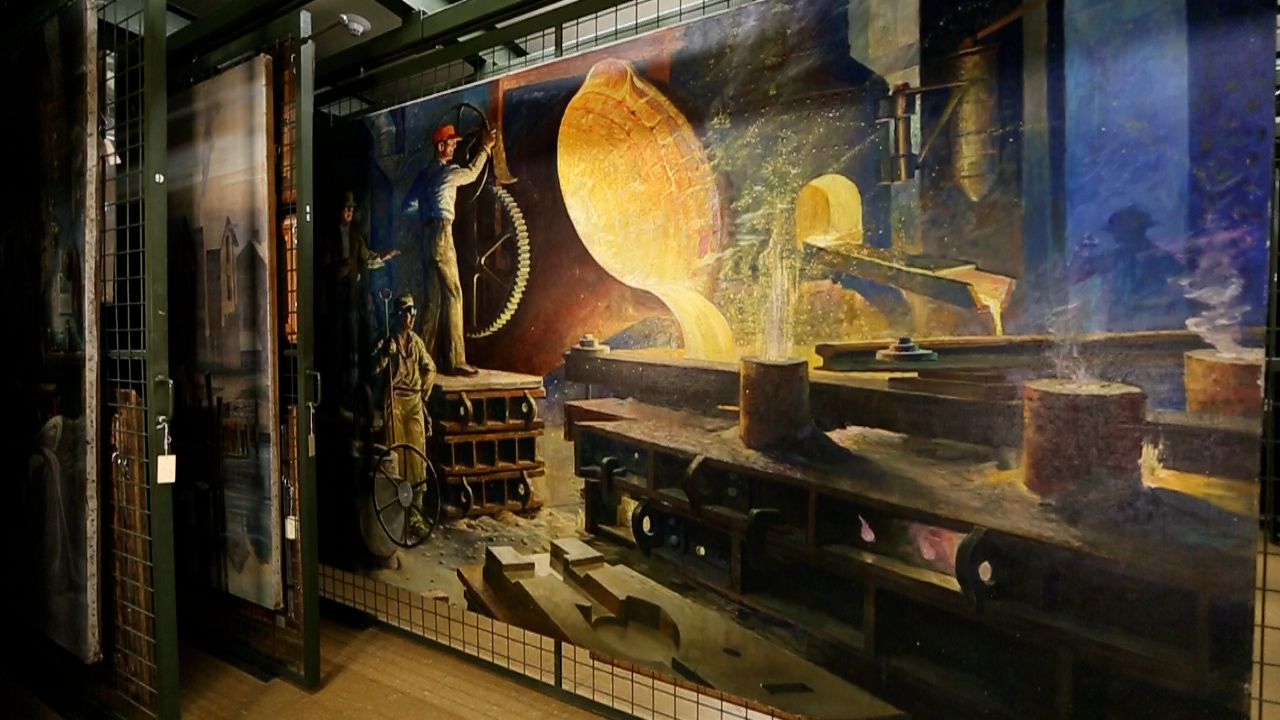
Approaching any 6 and a-half foot tall by 10 and a half foot wide painting is an experience. The sheer magnitude leaves you wondering whether you want to get closer or step back. But when approaching a Thomas Skinner piece, like this one – “The Foundry”, we feel as if we can step in.
Skinner has placed us on the floor of the Foundry at Newport News Shipbuilding in 1953; we stand there with the nearly life-sized figures as if we, too, are amongst the skilled shipbuilders in this shop, watching this process unfold. This scene that seems so unreal to many of us, was and still is, a part of the regular operations at the same shipyard, 67 years later.
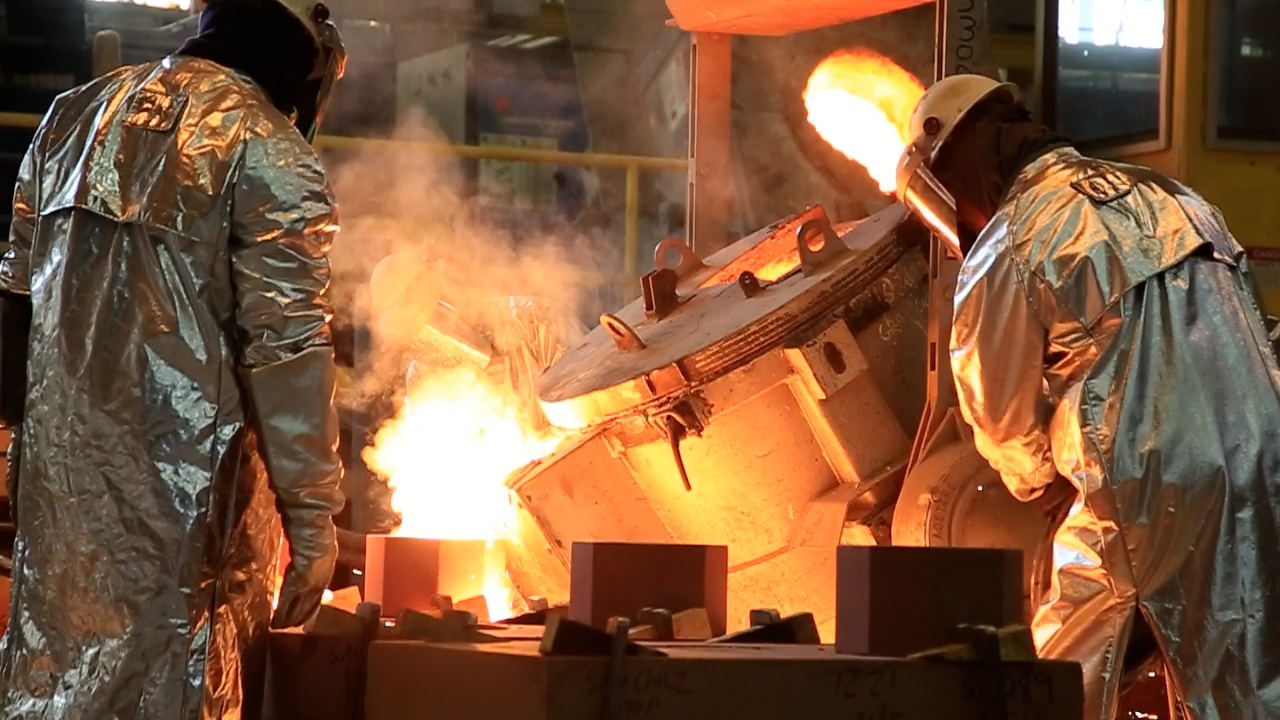
“The Foundry” is number 11 of 12 in the “Shipyard Series” of murals painted by Skinner between 1932 and his death in 1955. It was the last work in the series that the artist actually completed.
The Story of Skinner
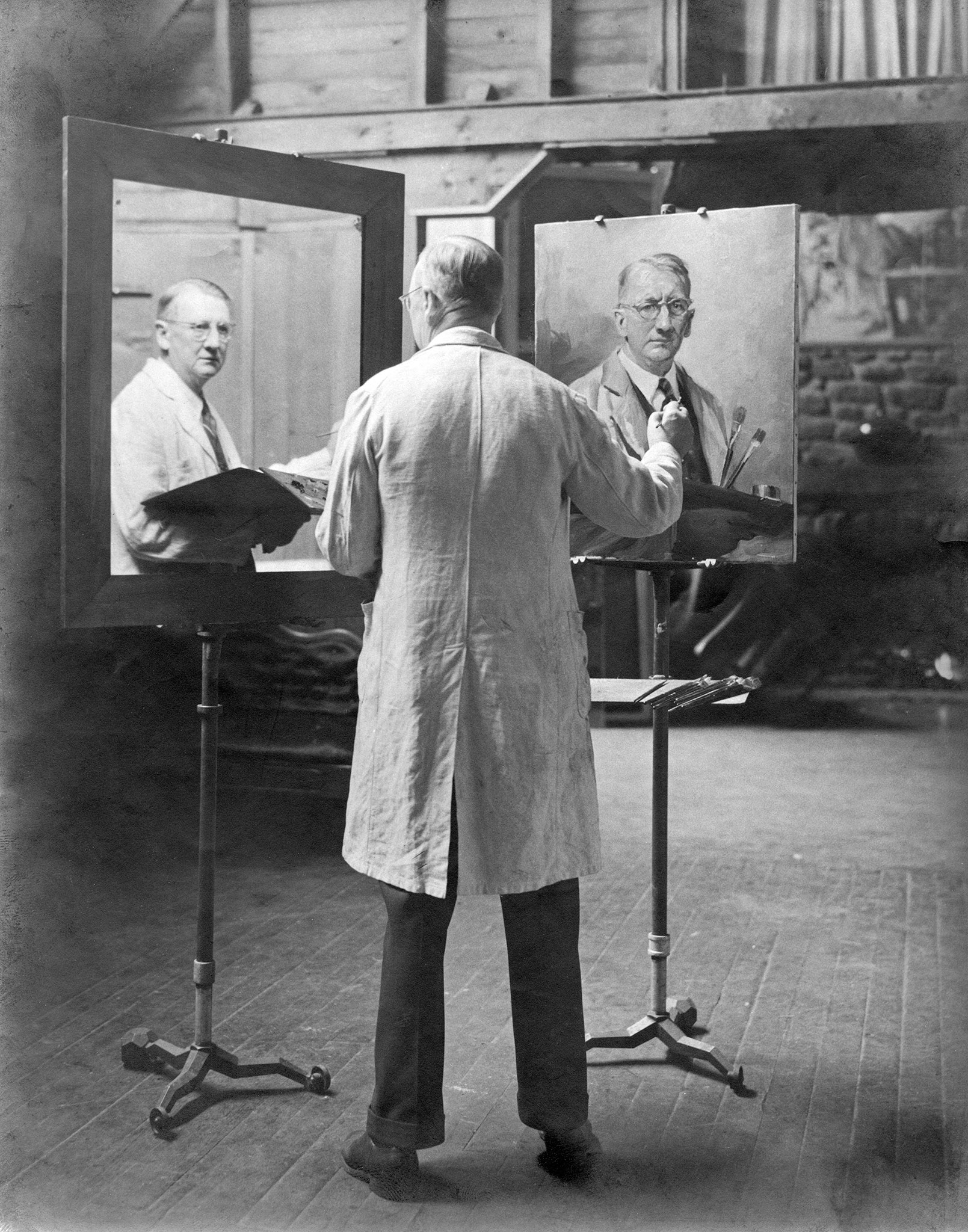
Skinner was a painter in New York, originally from Kentucky, who came to Newport News, Virginia in 1930 at the request of his brother-in-law, Homer Ferguson, president of Newport News Shipbuilding at the time, and first president of The Mariners’ Museum.
Skinner’s job was to be the staff artist for the Museum, though he set up his studio above one of the shops at the shipyard and quickly got to work.
He was an American Realist who had painted with a group in New York known as the Ashcan School – the group with which Edward Hopper painted. Here in Newport News, he began his monumental series documenting the industry of the Shipyard.
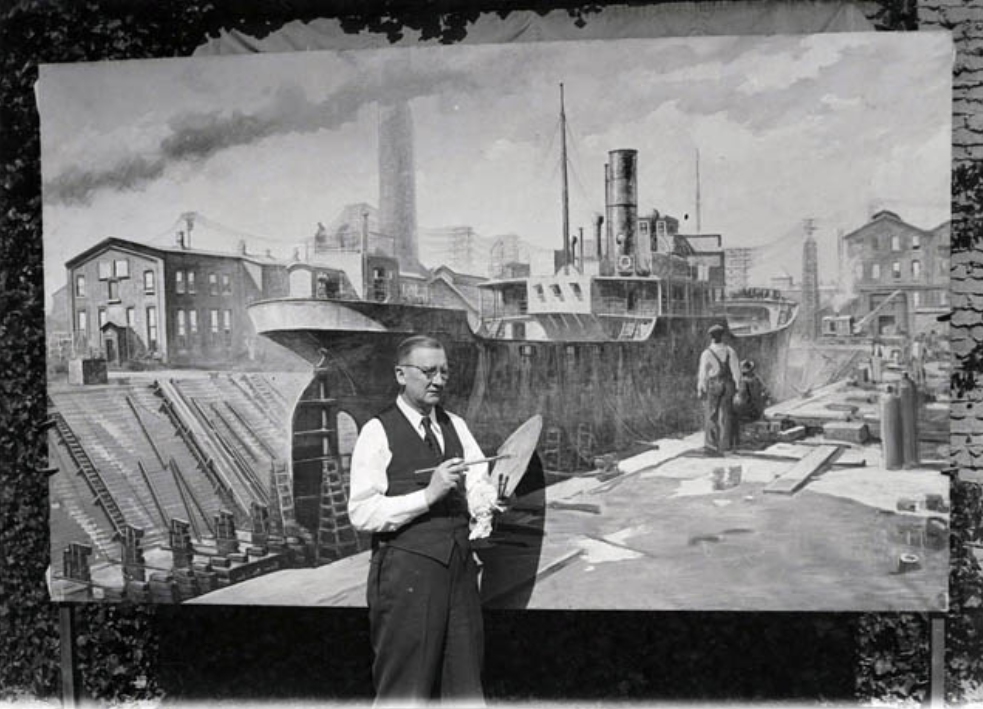
For more than a century, Newport News Shipbuilding has built both military and commercial ships, and is one of Virginia’s largest employers. They are currently the sole builders of United States Navy aircraft carriers and one of only two submarine providers.
The Purpose of Scale
But how do you convey the immensity of an aircraft carrier? How do you relate the weight of a giant propeller? How do you translate the heat coming off of a glowing ladle of molten steel large enough to pour parts that become the backbone of ships? Thomas Skinner’s answer to that was scale.
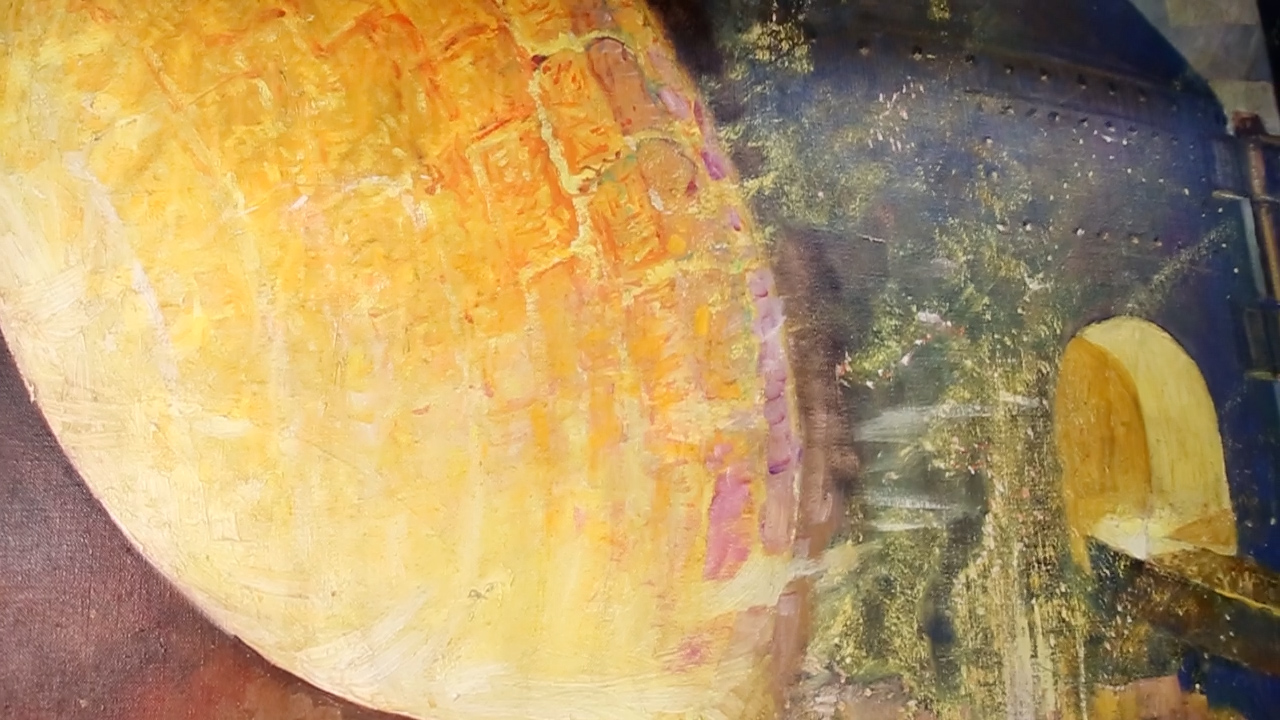
Large format paintings are typically used to importance. The scale of the subject matter within the painting is used to highlight or emphasize aspects of it. I believe Skinner painted these massive representations of various shipyard shops and scenes to highlight several things. First is the important work that was taking place there. During the 25 years that Skinner was painting scenes of the shipyard, there were times of monumental change – most notably the Great Depression and World War II. Skinner saw ships built and launched that, along with many of their builders, would never return from war.
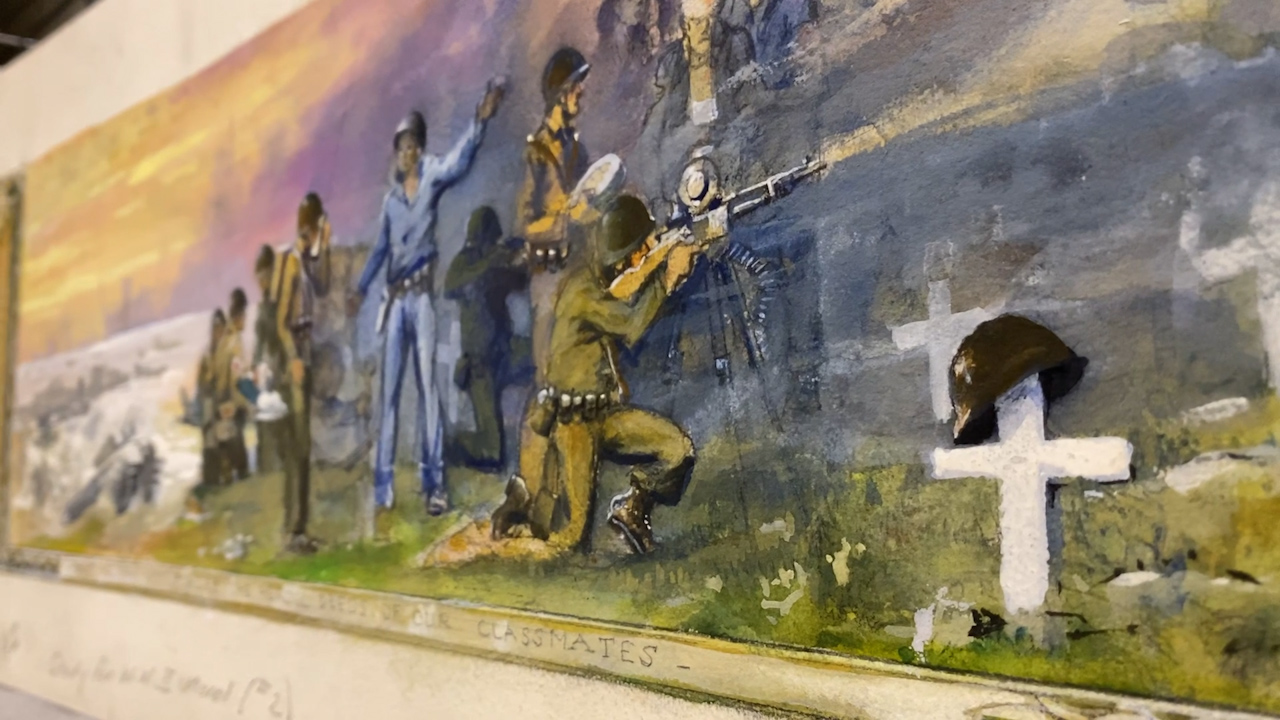
Memorial Mural by Thomas Skinner. Watercolor and Pencil on Paper. 1968.0450.000001. Photo courtesy: Kyra Duffley/The Mariners’ Museum and Park.
The Power of People
Yes, we can note that the scale of the shipbuilders helps to convey the immensity of the machinery and the expansion of the industry, but the size of the paintings themselves allows us to see the details of the people. And that is what I believe Skinner truly sought to highlight – the shipbuilders upon whom this industry depends. When we look at these works, we see real people. Their faces, their details, and their personalities.

This is underscored by Skinner’s use of color. Being a realist, Skinner painted scenes of real life. Everyday subjects, free from romantic over exaggeration or pretentious exclusion of subjects. Many of us would think of scenes of industry as grey – cold, hard, and stern. But Skinner painted this industry and these shipbuilders as he saw them. His own reality is a colorful and vivacious one, glowing and glistening with color.
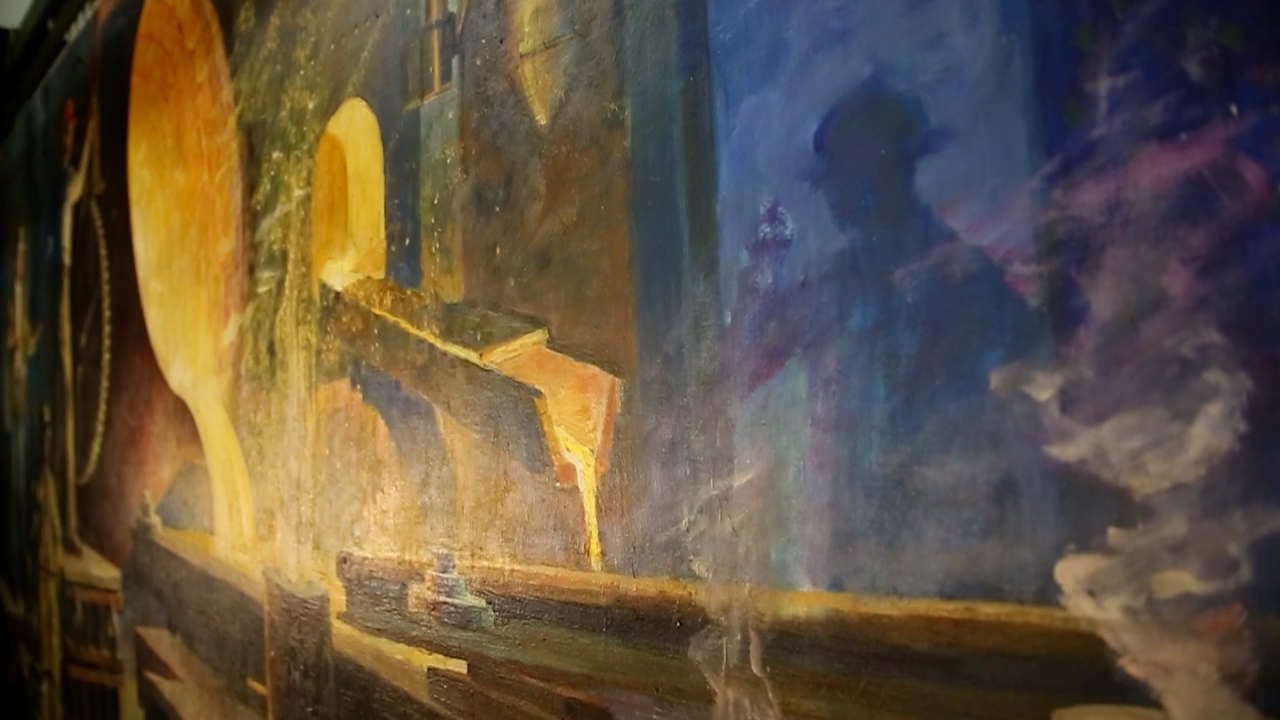
A Reflection of our Community
A community of workers of all backgrounds, side by side at a yard that was far ahead of its time in employing and educating minorities and people of color, even as many other employers would not. These are people who came together to realize engineering marvels. People who came here for employment at the Shipyard, or with the military, or those who were born and raised here.
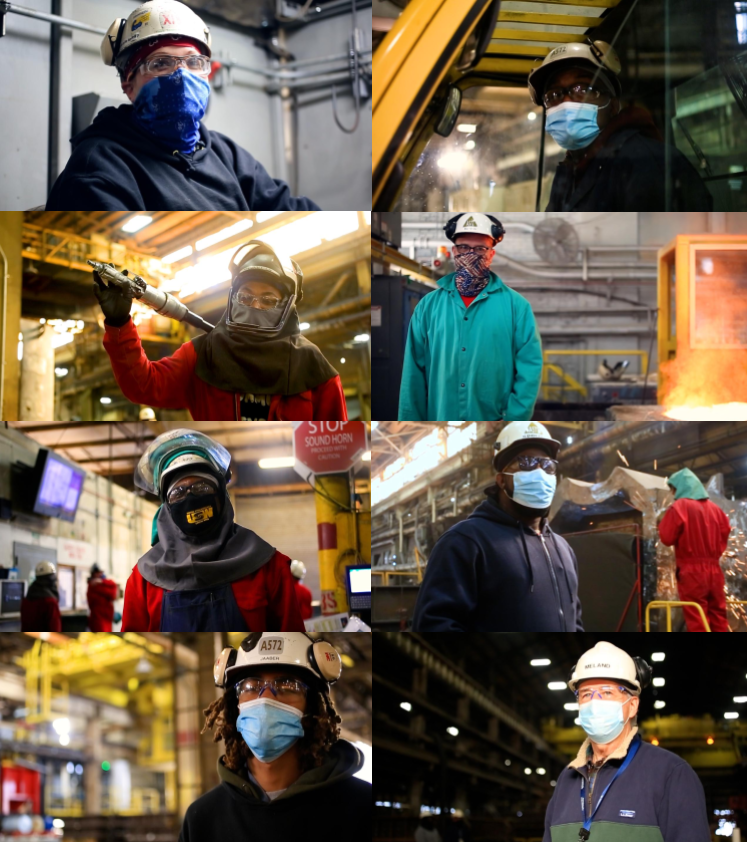
He shows the soul of our community. Our community built on the work of generation after generation of shipbuilders. Our community, vibrant and colorful like the paintings, alive and buzzing with the spirit of the people who call this town “home”. These works immortalize the importance of people in industry at such an immense scale.
These shipbuilders, and their contributions, continue to remind us that our shared maritime heritage extends further than we ever imagined.
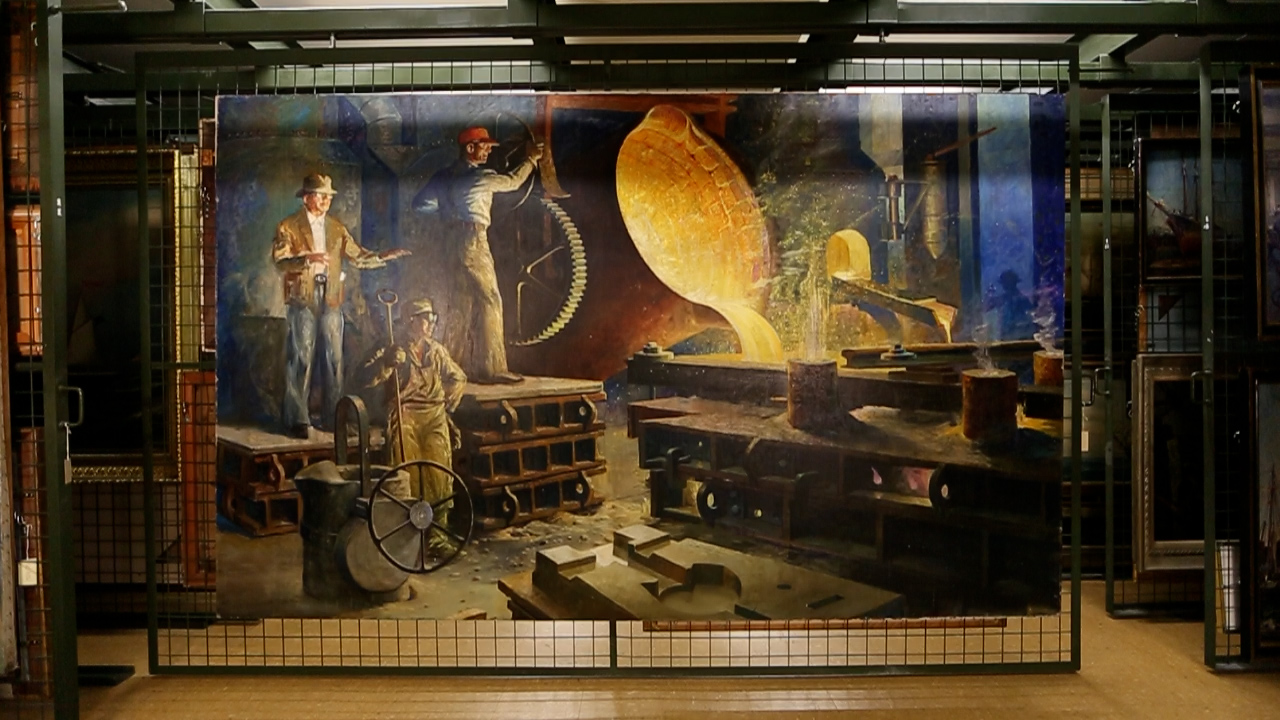
Be sure to watch the full episode here and stay tuned for new episodes the first Friday of each month!